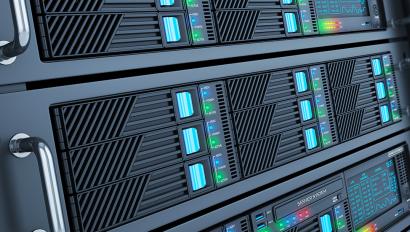Why Protecting Your Facility Means More Than Guarding Against Theft

Some of the most common electronic security systems used by the industry include security cameras, access control, audio/video verification and thermal perimeter protection. Here are some real-life examples of the uses of these systems.
In many facilities, there is a great concern that their products, both raw and finished, can be mishandled, mistreated and have an inconsistent chain of custody. When you integrate a video surveillance system with access control, managers in these locations can accomplish multiple things:
-
First, they can lock out those not authorized to touch or handle certain products.
-
Second, they can access an audit trail to show who entered a part of their facility (or attempted to enter and was denied) to determine who had hands on these products.
-
Third, they can review footage from their camera system to watch the actual handling (or mishandling), where it was taken, who else had it in their possession and any issues that may arise from this mishandling.
Additionally, with a properly designed and installed video surveillance system, quality assurance managers can examine for issues that arise in product quality as well as review for any customer complaints.
In one pharmaceutical manufacturing facility, they used a higher quality camera in their high-classification areas of production that could determine how a hair got into a pill. At another location, the facility manager was able to see footage that explained why food product in a package was damaged due to carelessness. At yet another location, they leveraged security camera analytics to alert management if an unmanned conveyor belt stopped working, so there wasn't a pile-up of product at the end of the line.
Camera systems, when properly installed, can also help a company avoid blame in the case of wrongful workers' compensation claims. The use of forklifts, and other heavy machinery, is reserved for those who have been properly trained and certified to use them.
In a well-known Philadelphia area manufacturing facility, an employee filed a claim because he injured himself at the facility. Upon reviewing the video surveillance footage, though, it was determined the injury was due to using a forklift, which he was not permitted to do. That one security camera saved the company countless time, money and resources.
Of course, manufacturing facilities also have traditional security concerns. They have very expensive machinery, product and other assets that may be attractive to thieves. Since many of these facilities are rather large, using audio- or video-verified alarms, instead of a traditional non-verified alarm, helps ensure that police are dispatched for true break-ins and can better pinpoint the criminal's location within the facility. Many manufacturing plants also use thermal perimeter cameras to properly protect large yards that could contain high-value equipment and pallets of goods. These thermal cameras can determine if an intruder is a person or animal, so the police are dispatched appropriately.
Finally, in the age of COVID-19, many manufacturing facilities are using technology to help ensure employees and visitors entering the facility are healthy enough to enter. From human temperature screening devices (which can also detect the presence of a face mask) to visitor management systems that send health questionnaires to employees, there are many solutions available to manufacturing facilities to help ensure health, safety and security both for people inside the building as well as those buying the finished product.
Disclaimer: By using the Blog section of this website ("Blog"), you agree to the terms of this Disclaimer, including but not limited to the terms of use and our privacy policy. The information provided on this Blog is for information purposes only. Such information is not intended to provide advice on your specific security needs nor to provide legal advice. If you would like to speak to a Security representative about your specific security needs, please contact us.























